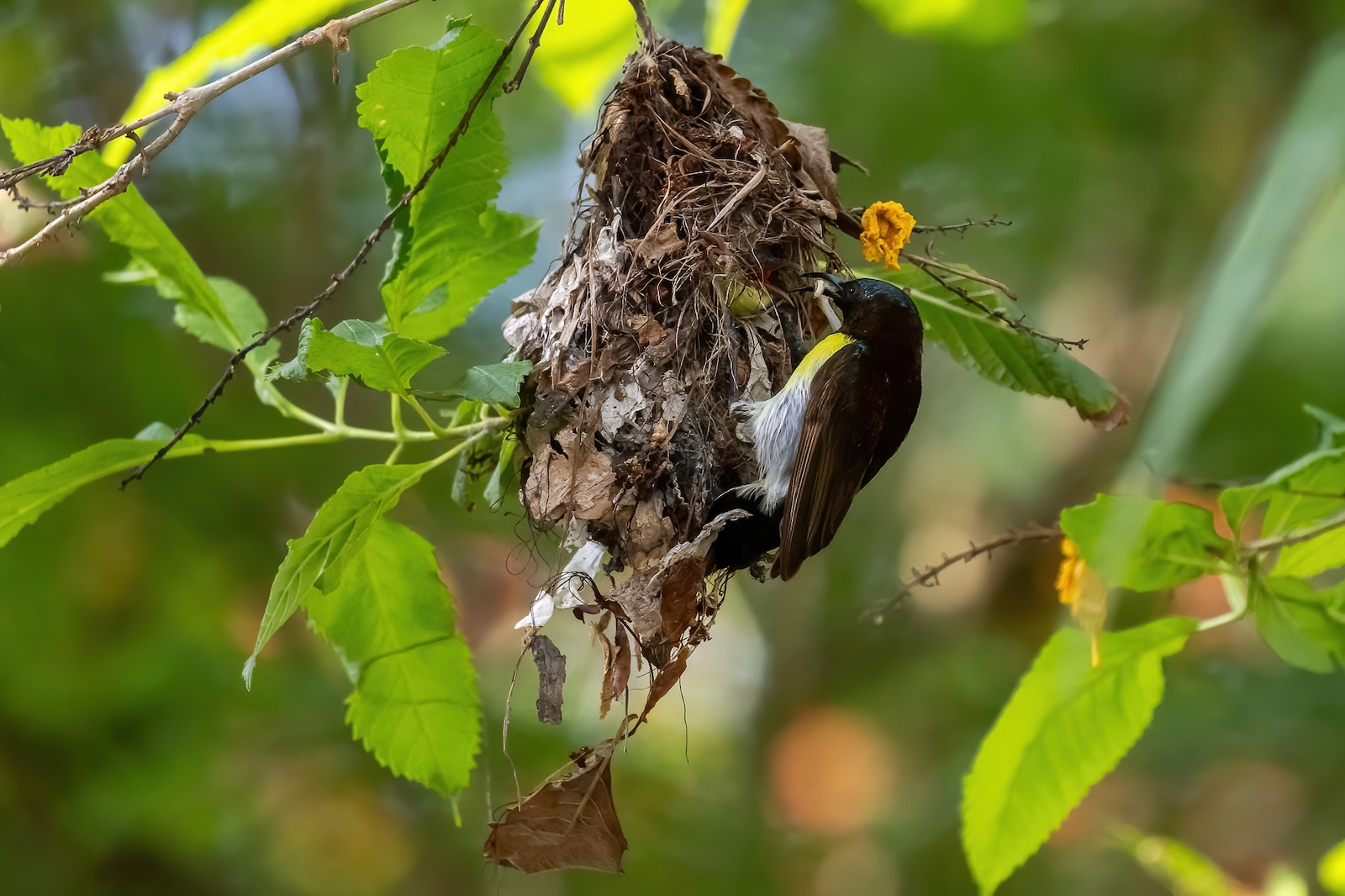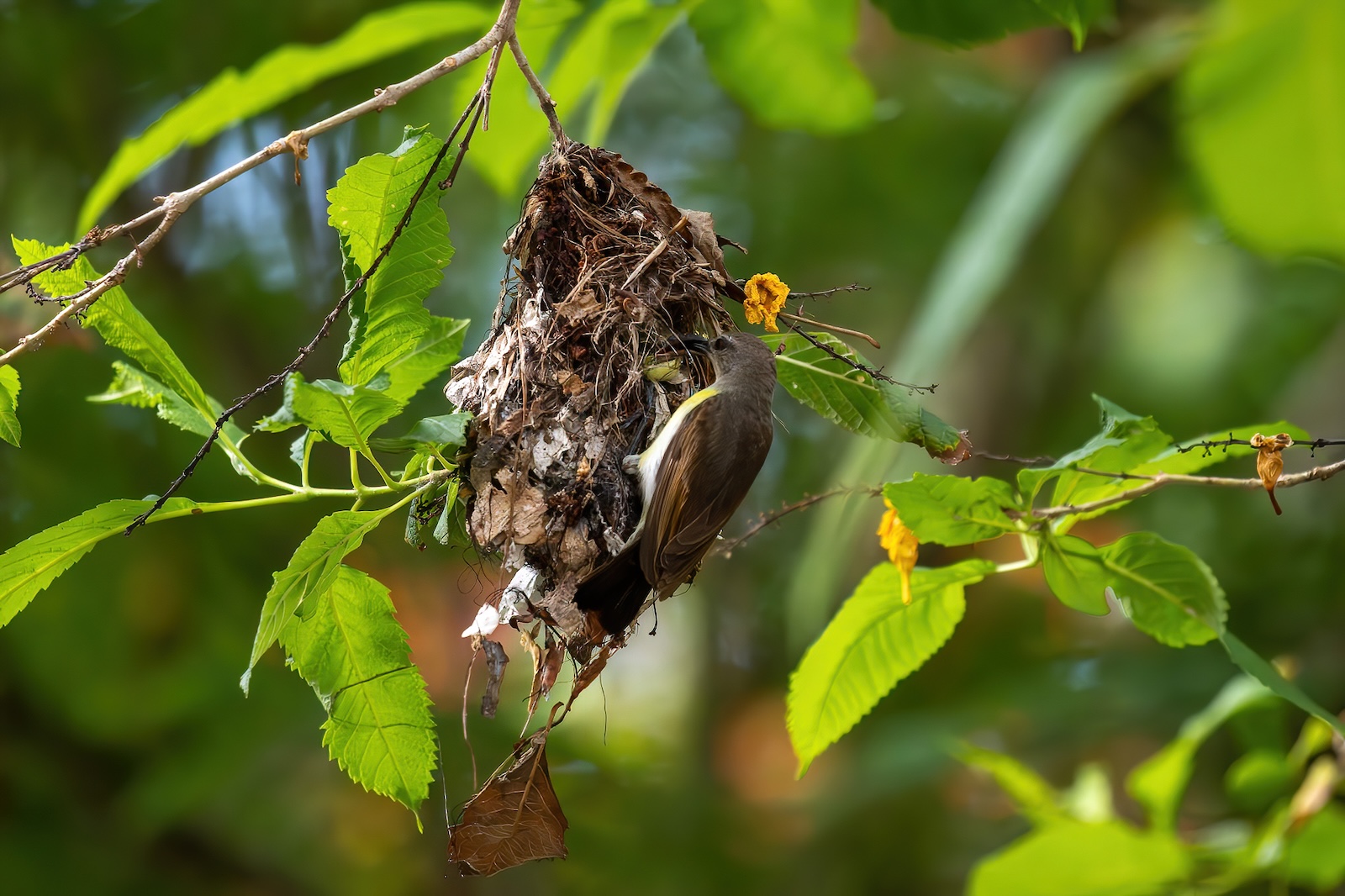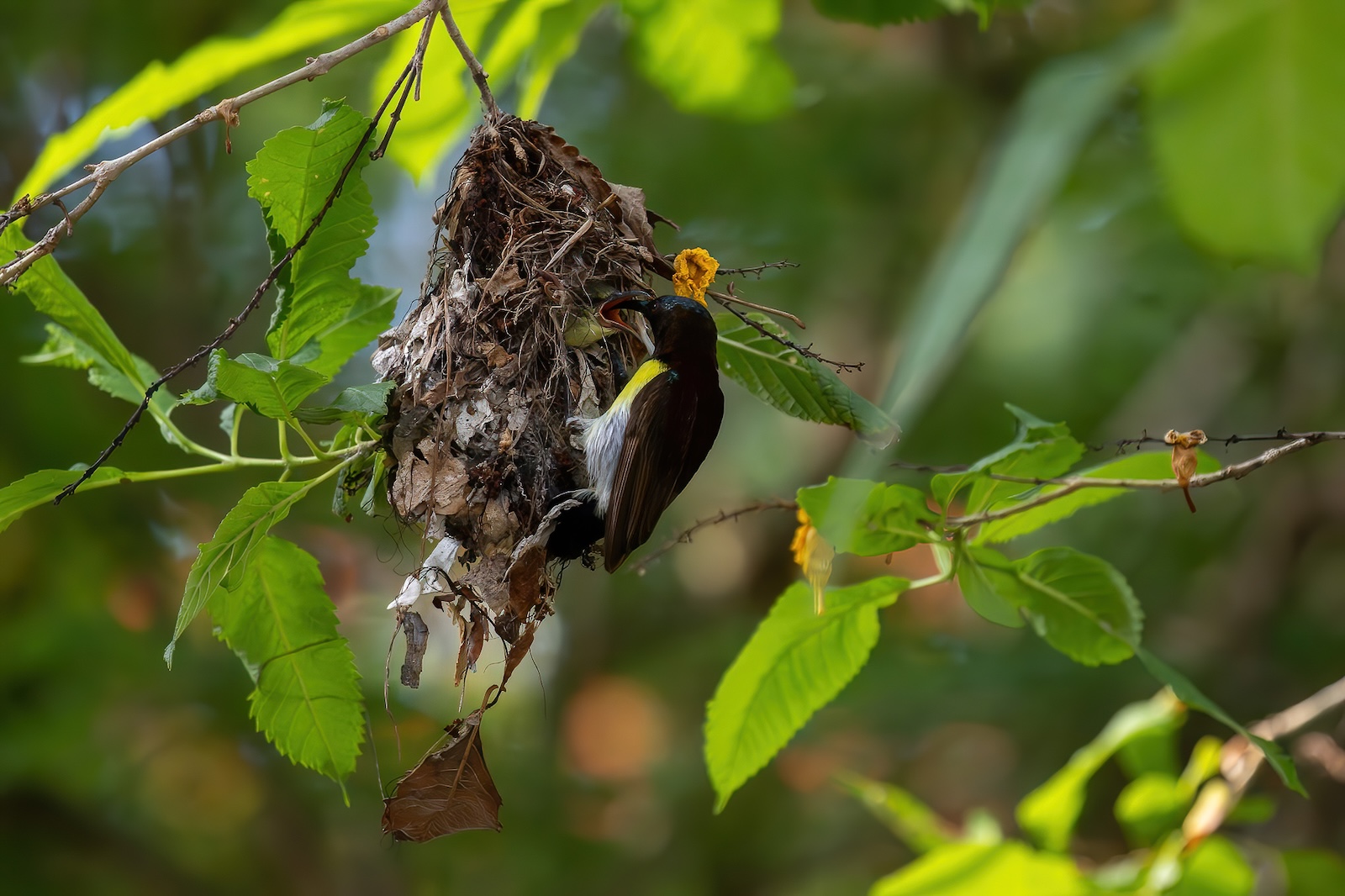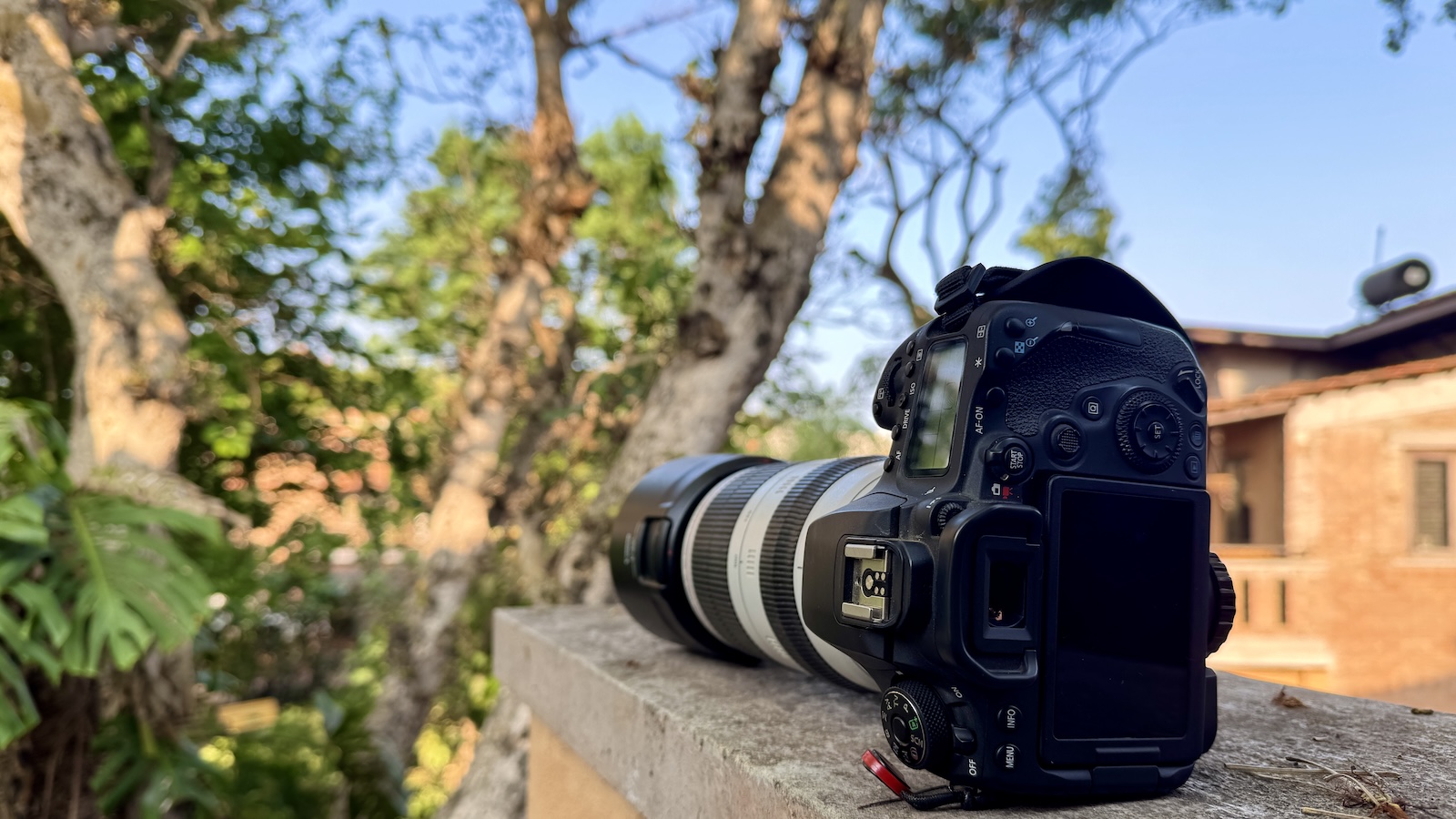This morning, right outside my house, I had one of those rare moments that make you reach for your camera instinctively. A Purple Sunbird family had set up a cozy little nest nearby, and while I’ve often seen the diligent female ferrying food to the young, today was different. The male, in all his iridescent glory, dropped in to do his bit. A few clicks from a safe distance, and I quietly stepped away, leaving them to their morning chores.

Here’s where it gets tricky.
Nesting photography is one of those hot-button topics in the birding world. There’s an almost unsaid rule among many: don’t do it. Full stop. And I get it. Nests are sacred spaces. The stakes are high for these birds—disturbance can lead to abandonment, stress, or attract predators. So why photograph at all?
Sometimes, documentation leads to awareness. And awareness, when handled with responsibility, can lead to conservation.
Let’s talk nuance.
The Good
Shooting with a zoom lens (I use a 100-400mm), staying far enough not to alter behaviour, and minimising time spent near a nest are some basic principles I stick to. In fact, several ornithologists have used nest monitoring data collected via remote photography or passive setups to study clutch sizes, parental roles, and chick development.
The Bad
Playback calls—where bird sounds are used to lure species for a better shot—can stress nesting birds immensely, making them think there’s a rival nearby. Studies have shown that repeated playback increases aggression and decreases feeding rates, which directly affects chick survival. Not cool.
The Unethical
Then there’s the act of baiting—placing food to attract birds. When done near nesting sites, it’s a massive red flag. It messes with their natural behaviour, habituates them to human presence, and can even draw predators.

So here’s my two-rupee take:
Birding, like comedy, is all about timing and respect for your audience. If your presence changes the punchline (or the feeding routine), you’re doing it wrong.
What We Can Do Instead:
- Use long lenses and stay hidden or far enough to be invisible.
- Avoid visiting nests too frequently, even if the urge to document every stage is real.
- Never share real-time nest locations publicly—it invites trouble, sometimes unintentionally.
- Educate. Use your images to start conversations, not controversies.
- Yes, there are grey zones. But intent and impact are what matter most.
- If you’re there just to capture a ‘rare shot’ for likes, maybe step back.
- But if you’re there as a silent observer, storyteller, and student—then perhaps, just perhaps, it’s okay.
Nature’s stories are best told when they’re unaltered.
Purple-rumped Sunbird (Leptocoma zeylonica) facts:
- Male ID: Glossy purple crown, dark maroon back, metallic green shoulder patch, lemon-yellow belly. A true flying jewel.
- Female ID: Olive-grey upperparts, pale yellow underparts, white throat with a faint greyish eye-stripe.
- Nesting: Builds a hanging, pouch-like nest using fibers, cobwebs, and bits of plastic, often near human habitation.
- Parental Duties: While the female is the primary incubator, both parents feed the chicks—though the male’s participation is less often observed.
- Diet: Nectarivorous, but also feeds on small insects and spiders, especially when feeding chicks.
- Call: A high-pitched “cheep” or “tit-tit,” sometimes mistaken for an insect sound.
- Habitat: Common across peninsular India, found in gardens, parks, and open woodlands.
- Pollinator Role: An important native pollinator, especially for tubular flowers like hibiscus and lantana.




